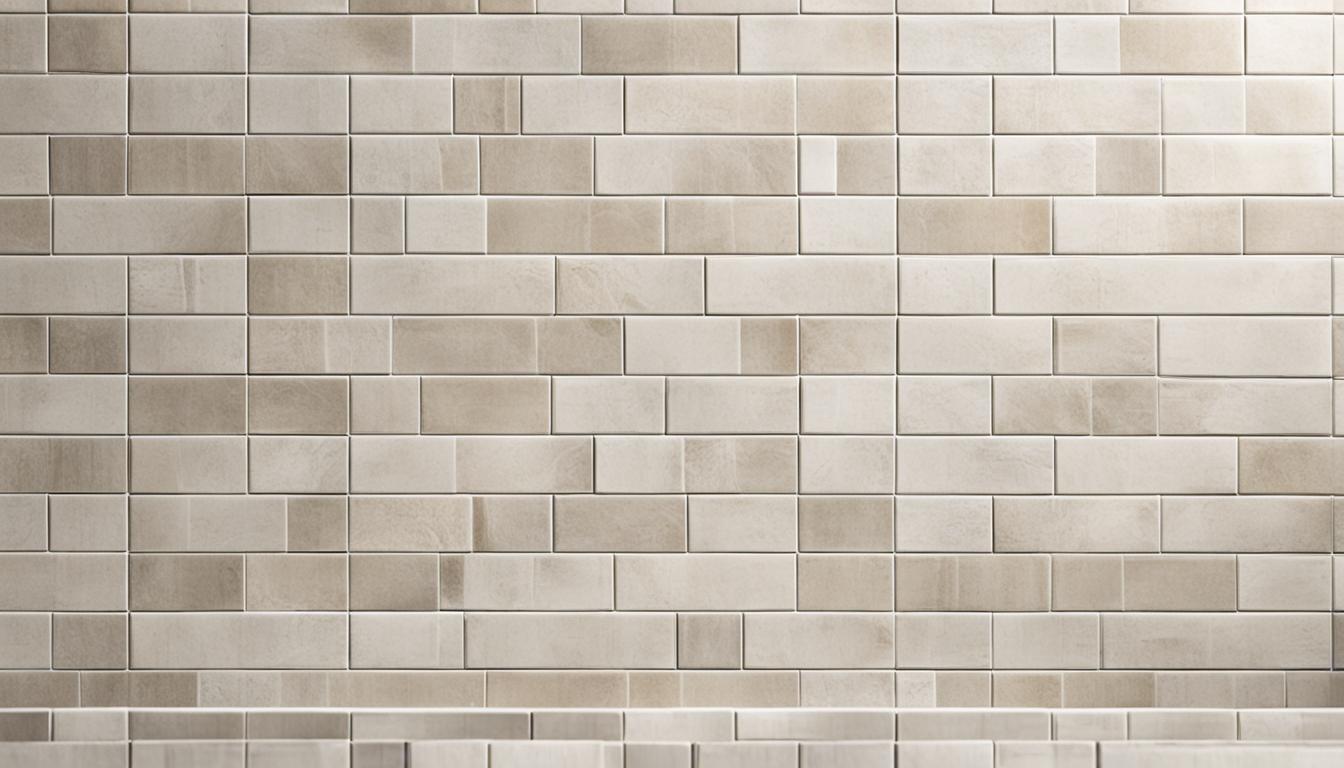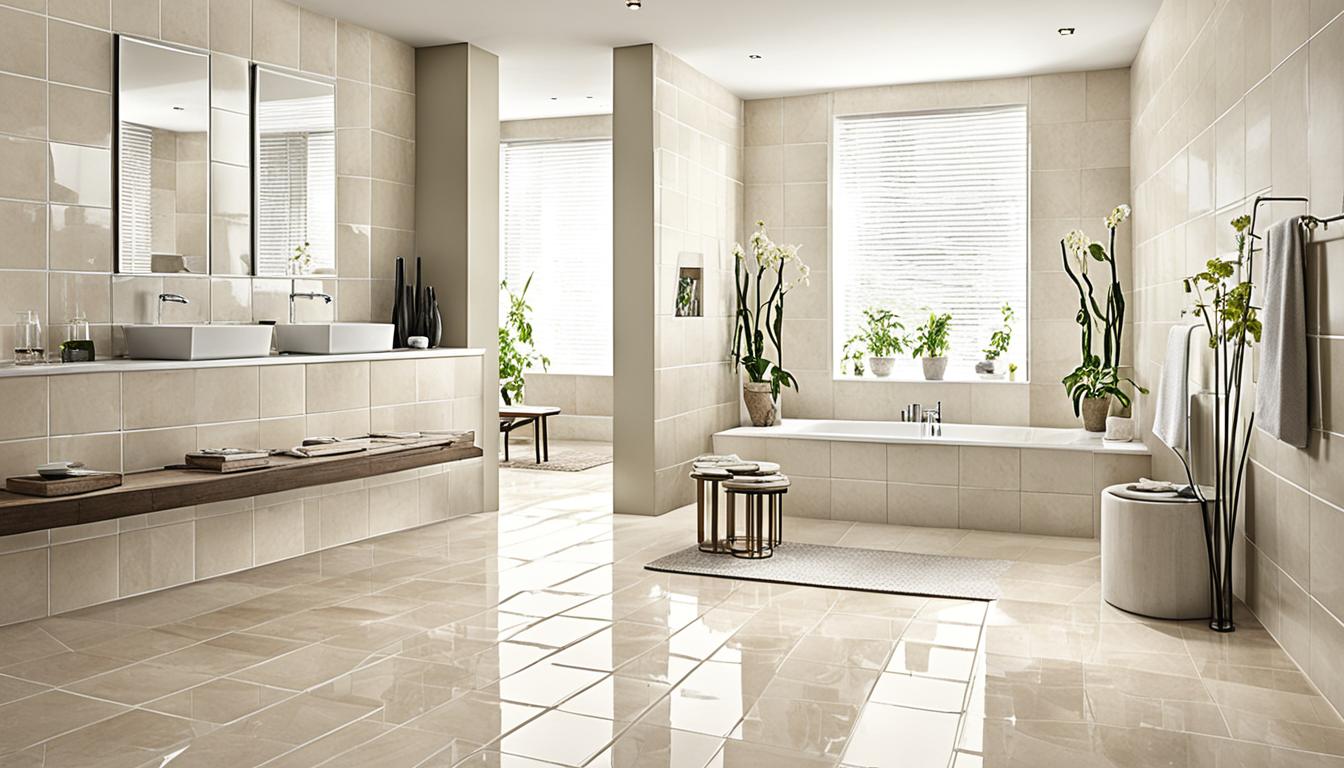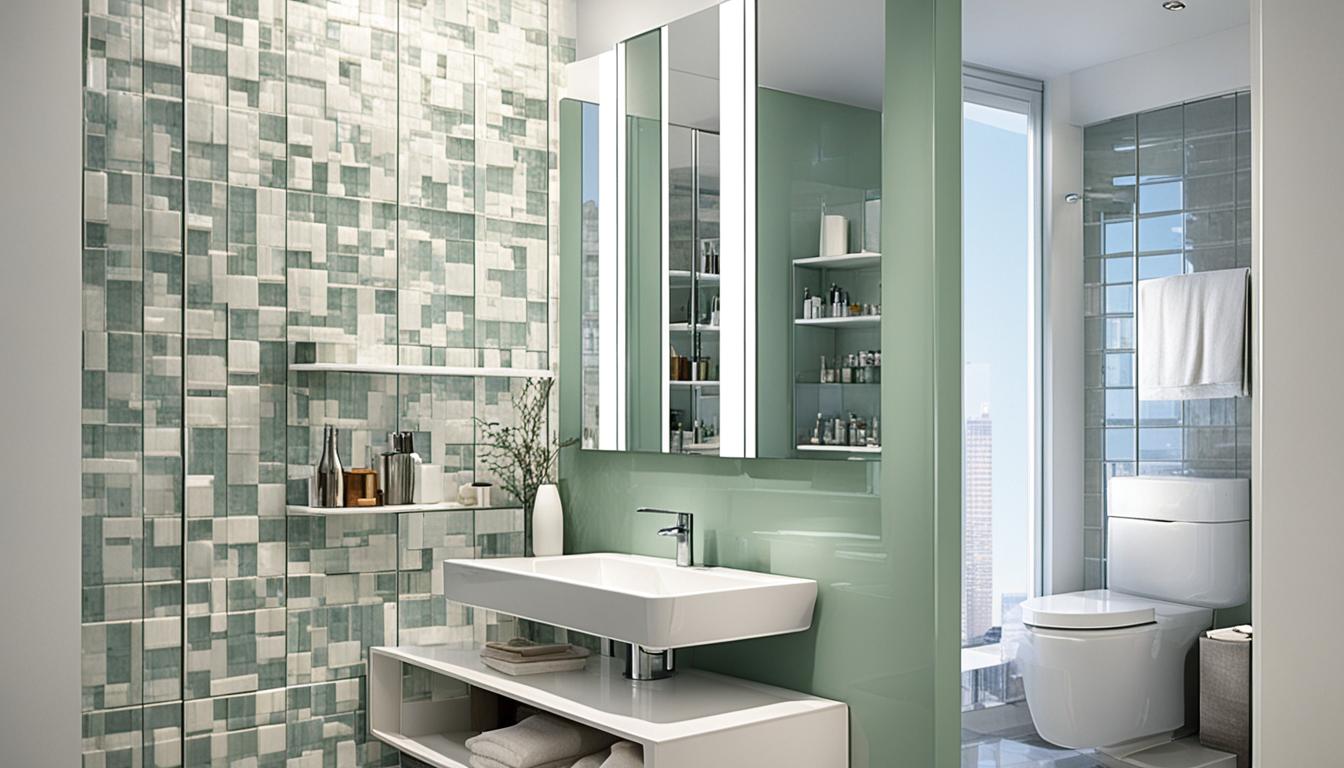🤍 Unmatched Quality, Authentic Craftsmanship
🤍 Unmatched Quality, Authentic Craftsmanship
🤍 Unmatched Quality, Authentic Craftsmanship
In our quest to create the perfect living spaces, we often find ourselves faced with the challenge of smaller rooms.
But fear not! We have a secret weapon that can help maximize space and create the illusion of a larger room – tiles.
Yes, tiles have the power to transform a space and make it appear bigger than it actually is.
So, how do we use tiles to create this optical magic? By carefully selecting the right tiles and employing clever design techniques, we can enhance the perceived size of a room and create an open and airy feel.
In this article, we'll dive into the world of options and strategies that can help in maximizing space with tile selection and give the impression of a spacious room.

When it comes to creating a spacious and open feel in a room, the choice of tiles plays a crucial role.
Large-format tiles have the unique ability to transform a space and make it appear larger than it actually is.
Their larger size not only creates a seamless expanse of flooring or wall covering, but it also minimizes the number of grout lines, resulting in a cleaner and more streamlined look.
The absence of "busyness" created by minimal grout lines can have a significant impact on how spacious a room feels.
Instead of having multiple small tiles with noticeable grout lines, large-format tiles create a more cohesive and expansive visual effect.
The reduction in grout lines creates a sense of continuity and makes the room appear larger by allowing the eyes to focus on the tiles' pattern and texture.
One of the key benefits of large-format tiles is their ability to enhance the perceived size of a room.
By providing a seamless expanse of flooring or wall covering, they create an uninterrupted visual flow that tricks the eye into perceiving a larger area.
This is especially effective in smaller rooms or spaces with limited natural light, where the seamless surface of the tiles can make the room feel more open and spacious.
| Large Format Tiles | Small Format Tiles |
|---|---|
| Minimize the number of grout lines | Create more visible grout lines |
| Enhance the sense of continuity and flow | Create a segmented and busy visual effect |
| Create a seamless expanse of flooring or wall covering | Make the room feel visually fragmented |
| Optical illusion of a larger area | No visual expansion effect |
Light-colored tiles, such as whites, ivories, and creams, have the ability to reflect more light, instantly brightening up a room and creating a sense of openness.
This can make a space appear larger and airier. Additionally, glossy tiles can further enhance this effect by reflecting light within the room.
When selecting the right shade, it's important to consider the overall aesthetic and choose colors that complement and blend well with the other elements in the space.

When it comes to bringing light into a room, light-colored tiles are a game-changer.
Their ability to reflect natural and artificial light creates an illusion of space, instantly making a room feel larger.
Whether you're dealing with a small bathroom or a compact kitchen, light-colored tiles can add a touch of brightness and expansiveness.
Glossy tiles take the light-reflecting effect to the next level.
Their shiny surface bounces light around the room, magnifying the illumination and amplifying the perceived space.
The reflective properties of glossy tiles make them an excellent choice for areas with limited natural light or spaces that need an extra boost of brightness.
When choosing the right shade of tiles, it's important to keep the overall aesthetic in mind.
Consider the existing colors and materials in the space and choose tiles that complement and blend seamlessly with the rest of the design.
This cohesive look will further enhance the spacious feel created by the light-colored and glossy tiles.
When it comes to creating a spacious look with tiles, the choice between plain and patterned tiles can make a difference.
Highly patterned tiles can make a space look busy and cluttered, which can make it feel smaller.
Opting for plainer or subtly patterned tiles can provide a more visually open and spacious feel.
The choice of tile patterns, such as scale and placement, can also impact the perception of the room's size.
Subtle patterns can add interest to a room without overwhelming the visual space.
Instead of intricate designs and bold motifs, consider choosing tiles with understated patterns that blend seamlessly with the overall aesthetic of the room.
These subtle patterns can create texture and depth, contributing to a sense of spaciousness while maintaining a clean and harmonious look.
The patterns of tiles play a crucial role in shaping our perception of a space.
Bold and busy patterns can make a room feel visually crowded, reducing the overall sense of spaciousness.
On the other hand, using plain tiles or tiles with minimal patterns can create a more open and expansive feel.
Choosing tile patterns that complement and enhance the size of the room can help create a visually pleasing and spacious environment.
By carefully considering the choice between plain and patterned tiles and selecting patterns that are subtle and complementary, you can create a visually open and spacious atmosphere in any room.
The right tile patterns, in combination with other design elements, can enhance the overall perception of space and contribute to a more expansive and inviting environment.

The layout and arrangement of tiles play a significant role in creating the illusion of space.
By strategically utilizing diagonal layouts and diamond patterns, you can visually enlarge a room and create a more spacious feel.
One effective technique for creating the illusion of space is using diagonal layouts.
By placing tiles at an angle, you can trick the eye into perceiving a larger area.
This layout strategy is particularly impactful in smaller rooms, where every inch counts.
The diagonal placement creates an elongated effect that stretches the boundaries of the space, giving it a more expansive and open appearance.
If you're looking to maximize the illusion of space, consider implementing diagonal layouts with light-colored or glossy tiles.
The reflectivity of glossy tiles can further enhance the effect by bouncing light around the room, increasing the overall brightness and perceived size.
Another option is to experiment with diagonal patterns within a single tile style.
For example, you can find tiles that feature a subtle diagonal texture or pattern, adding depth and dimension to the space without overwhelming it.
Diamond patterns are another effective way to create the illusion of space with tiles.
By arranging the tiles in a diamond shape, you can visually expand the perception of the room.
This pattern creates a sense of movement and flow, drawing the eye towards the corners and making the space appear larger.
When using diamond patterns, it's crucial to consider the scale and size of the tiles.
Larger tiles with diamond patterns make a bolder statement and can enhance the spacious feel.
On the other hand, smaller tiles with diamond patterns can provide a more intricate and detailed look.
To optimize the effect of diamond patterns, experiment with contrasting or complementary tile colors.
This will help highlight the shape and create a dynamic visual impact.
Whether you choose diagonal layouts or diamond patterns, these optical tricks can transform the perception of space in any room.
By carefully selecting the right tile layouts and patterns, you can create an expansive and airy environment that enhances the overall design aesthetic.
Certain types of tiles and tile choices can have a significant impact on how a space looks and feels.
Making strategic tile choices, such as selecting larger tiles, minimizing grout lines, and using light-colored and reflective materials, can help expand visual boundaries and create an illusion of space.
The choice of tile size can also influence spatial perception, with larger tiles often making a room appear larger.
When it comes to choosing tiles for a space, it's important to consider how they can help expand visual boundaries.
One effective strategy is to opt for larger tiles that cover more surface area.
By using larger tiles, you can create a sense of continuity and a smoother visual flow, making the room appear more spacious.
Additionally, minimizing grout lines by selecting tiles with thinner joints can help create a seamless and expansive look.
The size of the tiles can play a significant role in how we perceive the size of a room. In general, larger tiles tend to make a space appear larger.
This is because larger tiles have fewer lines and joints, which can create a sense of openness and continuity.
On the other hand, smaller tiles can make a space feel busier and more cluttered.
By choosing larger tiles, you can visually expand the room and create a more spacious atmosphere.

When designing and selecting tiles for small rooms, it's important to consider both functionality and aesthetics.
Choosing tiles that serve a practical purpose is crucial, especially in high-moisture areas like bathrooms.
Opting for tiles that are water-resistant and easy to clean can ensure that the space remains functional and easy to maintain.
At the same time, the aesthetic appeal of the tiles should not be overlooked.
Tiles can significantly contribute to the overall design and visual impact of a room, even in small spaces.
By carefully selecting tiles for small spaces, you can create a visually pleasing and spacious environment.
Consider the color, pattern, and texture of the tiles.
Lighter-colored tiles can help reflect more light, making the room feel brighter and more open.
On the other hand, patterned tiles can add visual interest and create the illusion of depth.
Combining functionality with aesthetics ensures that your small room not only looks good but also serves its purpose effectively.
| Functionality | Aesthetics |
|---|---|
| Choose water-resistant tiles for high-moisture areas | Select tiles that align with your desired aesthetic |
| Opt for easy-to-clean tiles for convenience | Consider the color and tile patterns for spacious look |
| Ensure that the tiles are durable and long-lasting | Experiment with different textures to add depth and visual interest |
By finding the right balance between functionality and aesthetics, you can create a small room that not only looks spacious but also meets your practical needs.
Investing time and effort in tile selection can truly transform a small space into a stunning and functional area.
The layout of tiles plays a crucial role in creating a spacious and open feel in a room.
By strategically arranging tiles, you can visually enhance the perception of space.
In this section, we will explore two effective tile layouts: the grid and elongated diamond layouts, as well as the vertical tile arrangement.
One of the tried-and-true layouts for achieving a spacious look is the grid layout.
This layout involves arranging tiles in a standard grid pattern, with each tile aligned perfectly with one another.
The grid layout creates a clean and organized aesthetic, contributing to the perception of a spacious room.

For those seeking to add a touch of elegance and elongate the room visually, the elongated diamond layout is a great option.
Another way to create the illusion of height is through a vertical tile arrangement.
By laying rectangular tiles vertically instead of horizontally, you can visually elongate the walls of the room.
This trick is particularly effective in spaces with low ceilings, as it gives the impression of greater height and airiness.
When employing these tile layouts, it is essential to consider the size and shape of the tiles, as well as the overall design aesthetic.
Experimenting with different tile arrangements can help you find the layout that best suits your space and enhance the perceived spaciousness.
The choice of tile materials plays a significant role in creating expansive effects within a space.
By selecting the right materials, you can enhance the spacious feel and transform your room into a visually captivating environment.
Ceramic tiles offer a versatile option for those who desire the warmth and natural aesthetic of wood flooring but also seek the durability and practicality of tiles.
With advanced manufacturing techniques, ceramic tiles can now beautifully emulate the look of wood, providing a striking combination of style and functionality.
Marble tiles, known for their timeless elegance, can elevate the luxuriousness of a space, infusing it with a sense of grandeur.
The natural veining patterns and unique color variations of marble add depth and character to any room, creating an expansive atmosphere.
When combined with ceramic tiles, the possibilities for expansive effects become endless.
Ceramic tiles come in a wide range of colors, finishes, and textures, allowing you to customize your space to achieve the desired aesthetic and spacious feel.
By carefully selecting and combining marble and ceramic tiles, you can create a stunning visual impact that enhances the perceived size of your room, making it appear more spacious and inviting.
Now that you have read the above article, maybe you still have a couple of questions on this topic, so we will answer these questions below.
Large format tiles, light-colored and glossy tiles, and tiles with minimal grout lines can all contribute to making a space appear larger.
Opting for plainer or subtly patterned tiles can provide a more visually open and spacious feel, as highly patterned tiles can make a space look busy and cluttered.
Small bathrooms, kitchens, and hallways can be completely transformed by using the right tiles.
Select light-colored, large-format tiles and carry them from the floor to the walls for a continuous flow and a more spacious appearance.
Look no further than Mojo Boutique, where they specialize in tiles for visually expanding a room.
With their vast collection of stylish and innovative designs, you can transform your living room into a visually larger space.
Creating the illusion of space with tiles is a smart and practical way to maximize the potential of any room.
By carefully considering factors such as size, color, layout, and material, you can transform a space and make it appear open and airy.
One effective strategy is to opt for large-format tiles, which minimize the number of grout lines and create a cleaner, more streamlined look.
This absence of "busyness" can make a room feel larger. Additionally, light-colored and glossy tiles can reflect more light, instantly brightening up a space and giving it a more spacious feel.
The selection of tile patterns is also critical.
Choosing plainer or subtly patterned tiles can provide a visually open and spacious feel, unlike highly patterned tiles that can make a room look cluttered.
Tile layout techniques, such as diagonal arrangements or diamond patterns, can create optical illusions of space and make a room appear larger.
Ultimately, the ideal tile selection should be based on the specific needs and aesthetics of the room.
Whether you're redesigning a small bathroom or revamping a kitchen, don't underestimate the transformative power of tiles.
With the right choices, you can create an expansive and inviting environment that maximizes the space in any room.


